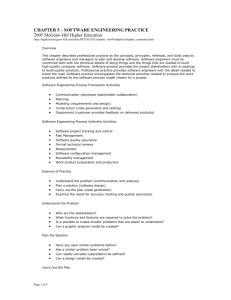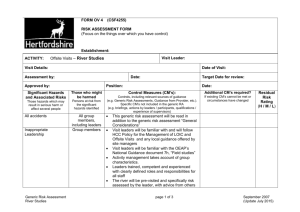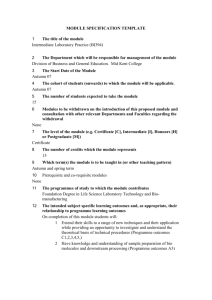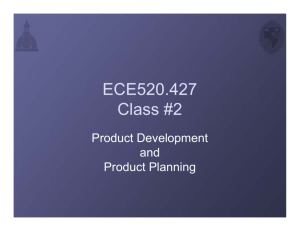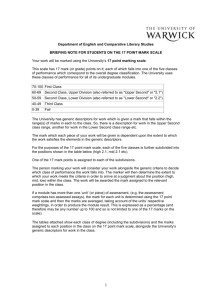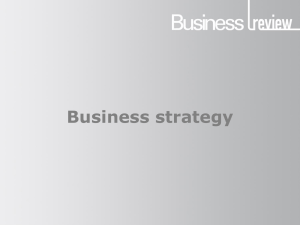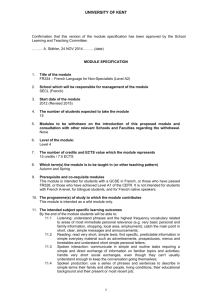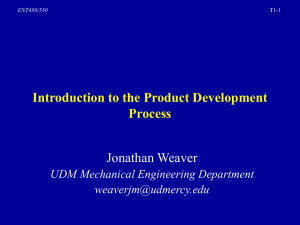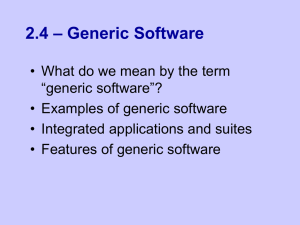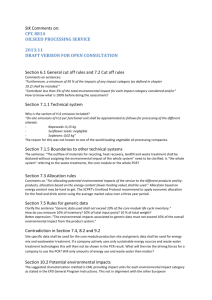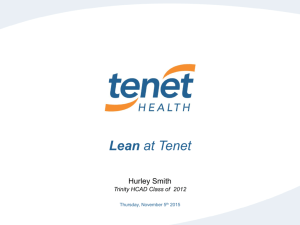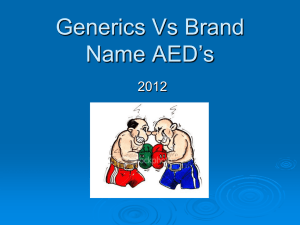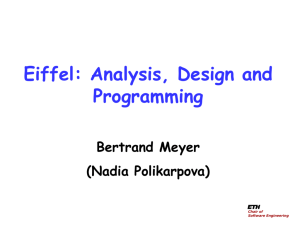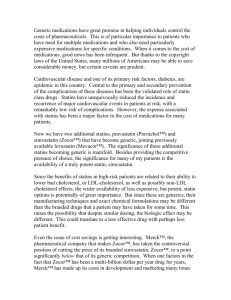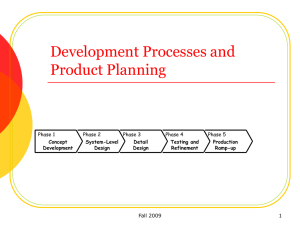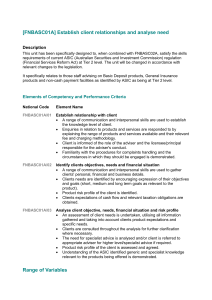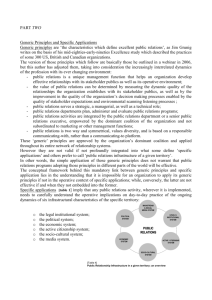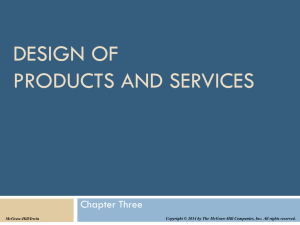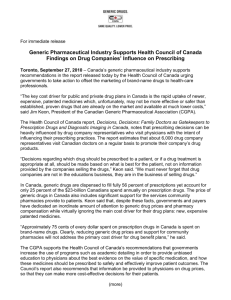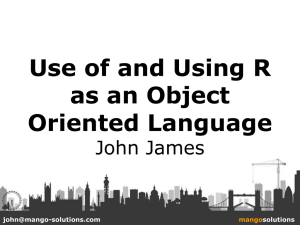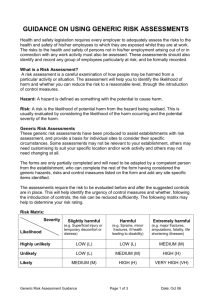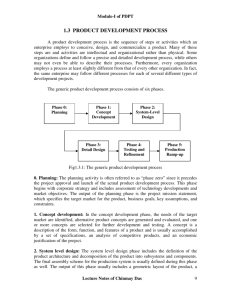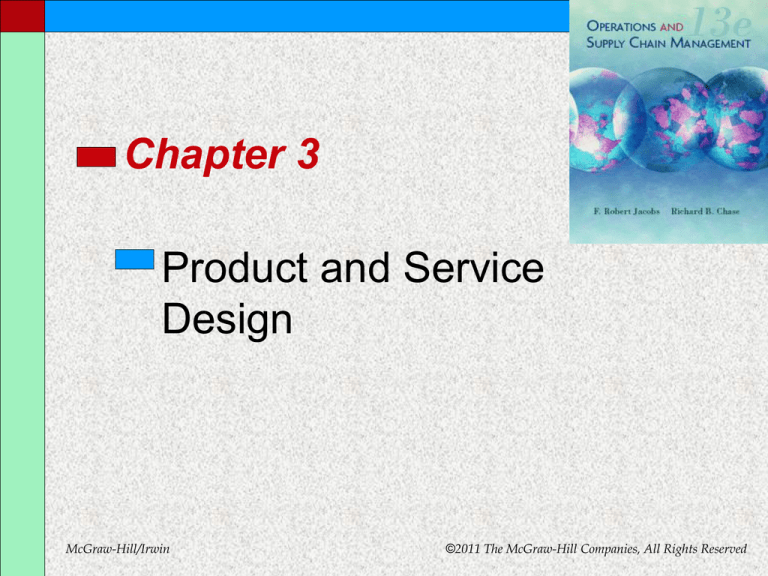
Chapter 3
Product and Service
Design
McGraw-Hill/Irwin
©2011 The McGraw-Hill Companies, All Rights Reserved
OBJECTIVES
Understand the product development
process for both manufactured and service
products.
Demonstrate how the development of
products can have significant economic
impact on the firm.
Align design with the desires of the customer
by using quality function deployment (QFD)
concepts.
Explain how design can significantly impact
manufacturing cost.
Be introduced to product development
performance measures.
3-2
Brainstorming
Defer judgment
Build on the ideas of others
Stay focused on the topic
One person at a time
Go for quantity
Encourage wild ideas
LO 1
Be visual
3-3
Rapid Prototyping
Easier to discuss a model
Three R’s:
Rough: it does not have to be perfect
Rapid: build models as fast as you can
Right: build lots of models that focus on
specific problems
The earlier in the design process,
the rougher a model can be
LO 1
3-4
The Product Design
Process
Companies continuously bring new
products to market
Product design is integral to success
Product design differs significantly
depending on the industry
Companies often outsource major
functions—often none core competencies
Contract manufacturer: an organization capable
of manufacturing and/or purchasing all the
components needed to produce a finished product
LO 1
3-5
Core Competency
Core competency: the one thing a
company can do better than its
competitors—non-imitable
A core competency has three
characteristics:
It provides potential access to a wide variety
of markets
It increases perceived customer benefits
It is hard for competitors to imitate
LO 1
3-6
Six Phases of the Generic
Development Process
Phase 0: Planning
Phase 1: Concept development
Phase 2: System-level design
Phase 3: Design detail
Phase 4: Testing and refinement
Phase 5: Production ramp-up
LO 1
3-7
Phase 0: Planning
Precedes project approval
Begins with corporate strategy
Includes assessment of technology
developments and market
objectives
Output is the project mission
statement
LO 1
3-8
Phase 1: Concept
Development
Needs of the target market are
identified
Alternative product concepts are
generated and evaluated
One or more concepts are selected
for further development and testing
Concept: A description of the form,
function, and features of a product
LO 1
3-9
Phase 2: System-Level
Design
Definition of the product architecture
Decomposition of the product into
subsystems and components
Final assembly scheme for the
production system is usually defined
Output:
Geometric layout of the product
Functional specifications for each subsystem
Preliminary process flow diagram
LO 1
3-10
Phase 3: Design Detail
Complete specification of the geometry,
materials, and tolerances for all parts
Identification of all the standard parts to
be purchased from suppliers
Process plan is established
Tooling is designed
Output:
LO 1
Drawings describing the geometry of each part
and its tooling
Specifications of purchased parts
Process plan
3-11
Phase 4: Testing and
Refinement
Construction and evaluation of
multiple preproduction versions of
product
Same geometry and material as production
version
Not necessarily fabricated with the actual
production processes
Prototypes tested to determine if the
product will work as designed
LO 1
3-12
Phase 5: Production
Ramp-Up
Product is made using the intended
production system
Want to train workers and resolve
any remaining problems
Products may be supplied to
preferred customers for evaluation
LO 1
Transition to ongoing production is
gradual
3-13
The Generic Product
Development Process
LO 1
3-14
Generic Product
Development Process
Technology-push products: firm begins
with new technology and looks for a
market
Platform products: built around a
preexisting technological subsystem
Process-intensive products: production
process has an impact on the properties
of the product
Product design cannot be separated from
process design
LO 1
3-15
Generic Product
Development Process Continued
Customized products: new products are
slight variations of existing configurations
High-risk products: technical or market
uncertainties create high risks of failure
Quick-build products: rapid modeling
and prototyping enables many designbuild-test cycles
LO 1
3-16
Generic Product
Development Process Continued
Complex systems: systems must be
decomposed into several subsystems
and many components
Generic: begins with a market
opportunity and team selects
appropriate technologies to meet
customer needs
LO 1
3-17
Summary of Variants of Generic
Product Development Process
LO 1
3-18
Economic Analysis of
Project Development Costs
Captures measureable factors
Using the measurable factors to help
determine:
Go/no-go milestones
Operational design and development decisions
Building a base-case financial model
A financial model consisting of major
cash flows
Sensitivity analysis for “what if” questions
LO 2
3-19
Merging the Project Financials and
Schedule into a Cash Flow Report
LO 2
3-20
Possible Sensitivity
Analysis Scenarios
Longer product development time
Higher/lower sales volume
Higher/lower sales price
Higher/lower development costs
LO 2
3-21
Designing for the
Customer
House of Quality
Quality Function
Deployment
Ideal
Customer
Product
Value Analysis/
Value Engineering
LO 3
3-22
Quality Function
Deployment
Interfunctional teams from marketing,
design engineering, and manufacturing
Begins with listening to the customer
Customer requirements
Uses market research
Customer preferences are defined and broken
down into customer requirements
Does customer always know what he wants?
House of quality
LO 3
Team uses customer feedback to make decisions
Translate customer requirements into goals
3-23
Completed House of Quality
Matrix for a Car Door
Customer
requirements
information forms the
basis for this matrix,
used to translate
them into operating or
engineering goals
LO 3
3-24
Value Analysis/Value Engineering
(VA/VE)
Purpose is to simplify products and
processes
Objective is to achieve better performance at
a lower cost while maintaining all functional
requirements defined by the customer
LO 4
Determine value content of a product
Does the item have any design features that are
not necessary?
Can two or more parts be combined into one?
How can we cut down the weight?
Are there nonstandard parts that can be
eliminated?
3-25
Designing Products for
Manufacture and Assembly
Traditional approach
“We design it, you build it” or “over the wall”
Very long lead times
Often cost prohibitive
Concurrent engineering
LO 4
“Let’s work together simultaneously”
Reducing time to market
Time saved by performing activities in parallel
Decrease costs while improving quality
Team engineering/design concept
Avoids pitfalls of traditional approach
3-26
Design for Manufacturing
and Assembly
Greatest improvements related to DFMA
arise from simplification of the product by
reducing the number of separate parts:
During the operation of the product, does the
part move relative to all other parts already
assembled?
Must the part be of a different material or be
isolated from other parts already assembled?
Must the part be separate from all other parts to
allow the disassembly of the product for
adjustment or maintenance?
LO 4
3-27
Proposed Motor Drive
Design
LO 4
3-28
Redesign of Motor Drive Assembly
Following Design for Assembly Analysis
LO 4
3-29
Designing Service
Products
Service products are very different
Direct customer involvement
introduces significant variability in the
process
Questions to address:
How will this variability be addressed?
What are the implications for operational
cost and the customer service experience?
LO 4
3-30
Three General Factors for
Determining Fit
Service experience fit
The new service should fit into the current
service experience for the customer
Operational fit
Existing processes should be able to
support the operation of the new service
Financial impact
Introducing a new service should be
financially justified
LO 4
3-31
Structural Alternatives for
a Family Restaurant
LO 4
3-32
Ecodesign
Ecodesign: the incorporation of
environmental considerations in the
design and development of products
or services
The whole life cycle is considered
The product is considered as a system
A multi-criteria approach is used
Application of ecodesign can benefit
business
LO 4
3-33
Measuring Product
Development Performance
A steady stream of new products is
important to competitiveness
Firms must respond to changing
customer needs and competitor
moves
Ability to identify opportunities and
bring new products to market is
critical
LO 5
Must also be efficient
3-34
Performance Measures for
Development Projects
LO 5
3-35

